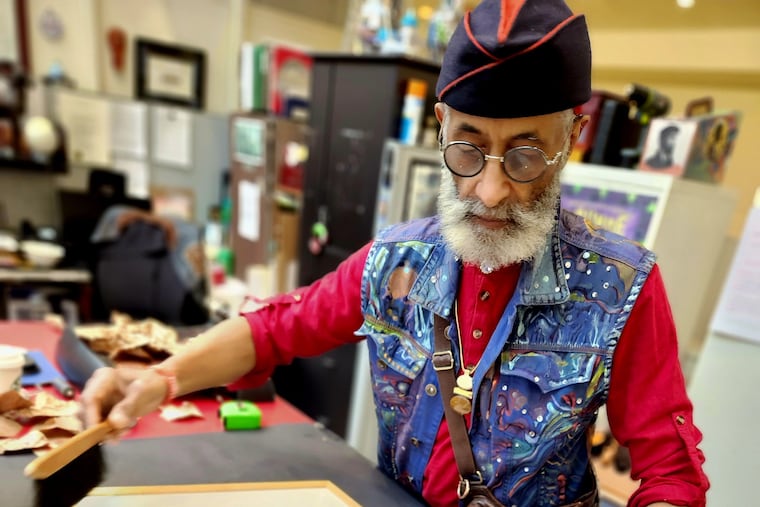Dox Thrash, the Philly printmaker known for depicting everyday 20th-century Black life, will be subject of exhibit
The “Imprint: Dox Thrash, Black Life, and American Culture” exhibit opens on March 23 at the African American Museum in Philadelphia.

By the time the pioneering artist Dox Thrash arrived in Philadelphia in 1926, the young man had already experienced a full spectrum of Black American life. His drawings and prints documented what it looked like to be a Black person in early 20th-century America, depicting what he saw in rural Georgia, Chicago, Philadelphia and even on the front lines of the first World War.
Thrash’s work is the subject of a new exhibit at the African American Museum in Philadelphia, which will feature nearly 100 of his prints, drawings, watercolor works and other pieces of art. The majority of the works are made with the unique carborundum mezzotint printmaking process that he co-invented in Philadelphia. The exhibit will officially open Saturday, March 23 and will run through Aug. 4.
On the evening of March 22, which is Thrash’s birthday, the museum will hold a free opening reception from 6 to 8 p.m., when visitors can view “Imprint: Dox Thrash, Black Life and American Culture” and hear from museum staff about Thrash and his work.
“You get to look through Thrash’s eyes, through [his] life experiences,” said Dejay Duckett, vice president of curatorial services at AAMP.
“I think about how much might have been lost if we didn’t have this work, how much of just everyday Black life and communities of the [20th century] that we wouldn’t know if he hadn’t taken the time to do this work.
Everyday life and extraordinary innovation
Thrash was born in rural Georgia in 1893, and left home when he was 15 in search of work as one of the millions of African Americans moving north in the Great Migration. He worked odd jobs in Chicago, including as an elevator operator, and enrolled at the School of the Art Institute of Chicago.
“It gives such, such rich lights and darks. These velvety blacks. It’s a sumptuous process of print-making.”
But when the United States entered World War I, Thrash enlisted in the Army. He served as one of the famed Buffalo Soldiers on the front lines, even needing to be hospitalized after suffering gassing and shell shock as a private in the 365th infantry, but was able to resume his art studies once the war was over.
After he settled in Philly, Thrash began working at the Fine Print Workshop of Philadelphia in 1937, funded by the New Deal’s Federal Art Project. He was the workshop’s first Black artist. It was here that he and other artists developed the carborundum mezzotint printing that Thrash became known for.
Thrash once described the intricate process:
“I got some of the carborundum powder they used in grinding lithograph stones and rubbed it into a copper plate with an old flatiron. I got a queer rough surface. Well, this fellow [Hubert] Mesibov looks over my shoulder, and says, ‘Hey, I bet you could work lines into that.’”
Thrash, Mesibov and Michael Gallagher perfected the technique together, and Thrash later called his prints “opheliagraphs,” in tribute to his mother.
“It gives such, such rich lights and darks. These velvety blacks. It’s a sumptuous process of print-making,” Duckett said. “The result is just really stunning. ... When you look at these pieces, they’re just so intimate.”
The subject of Thrash’s work largely was everyday Black life. His prints depicted street corners and close-up portraits, people at work and dressing up for a night out. A print of a girl reading and another of a mother and child walking past a lynched man both tell part of the story of African American life before the Civil Rights era.
» READ MORE: Philly’s Dox Thrash house will get a second life with preservationists acting as investor-partners
“This exhibition really thinks about and talks about the importance of cultural and historic preservation — that we think about these places, that we pass down the information, that lobby for these places to remain in the community,” Duckett said, referencing the historic Dox Thrash House in North Philly where the artist once lived that advocates have fought to preserve.
“This history can easily dissipate. His work is so beautiful and technically astonishing,” she said.
“I think Thrash captures what otherwise might have been lost to history.”